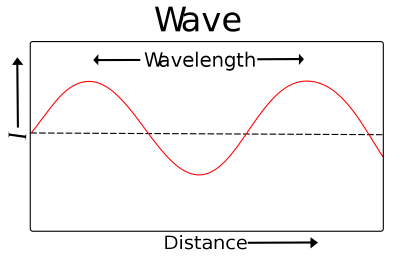
Wavelength, distance between corresponding points of two consecutive waves. “Corresponding points” refers to two points or particles in the same phase—i.e., points that have completed identical fractions of their periodic motion. Usually, in transverse waves (waves with points oscillating at right angles to the direction of their advance), wavelength is measured from crest to crest or from trough to trough; in longitudinal waves (waves with points vibrating in the same direction as their advance), it is measured from compression to compression or from rarefaction to rarefaction.
Wavelength of light varies with colours, i.e., it is different for every colour. Red colour has the longest wavelength while violet has the least. The wavelength of UV radiation is shorter than violet light. Similarly, the wavelength of infra red radiation is longer than the wavelength of red light.
Wavelength is inversely proportional to frequency. This means the longer the wavelength, lower the frequency. In the same manner, shorter the wavelength, higher will be the frequency.
Picture Credit : Google




